2019年岁末的一场新型冠状病毒(2019-nCoV)肆虐让整个中华大地笼罩在恐慌之中。2020年1月23日中科院武汉病毒所研究发现新型冠状病毒与此前在云南中菊头蝠(Rhinolophus affinis)上检测到的蝙蝠冠状病毒RaTG13相比较具有96.2%的一致性。据此推测新型冠状病毒起源于蝙蝠。国外大量研究报道证实蝙蝠确实是携带非常多病毒种类的哺乳动物之一,但是因为特殊体质(高温)和强大的免疫系统,这些病毒并不能对蝙蝠造成伤害。而维持高体温和增强免疫系统与新陈代谢(能量代谢)密切相关。
SSI多功能创新型动物能量代谢监测基于呼吸代谢室(metabolic chamber)技术,系统主要由定制呼吸室、气流发生控制与二次抽样单元、气体分析(氧气、二氧化碳和水汽)单元、数据采集器,功能强大数据分析处理软件等组成,可以备选温度传感器探针、温湿度控制箱、动物活动度监测器、动物行为记录与分析单元、野生动物专用红外热成像单元、植入式温度(心率)记录仪等全面记录动物的行为与生理参数,广泛用于动物呼吸生理学、肠道微生物能量代谢调节,神经与免疫代谢调节,野生动物生理生态以及与微生物宿主的协同进化研究等。

上图为几种动物的能量代谢测量研究(备注:左上图的蜂鸟设计同样适用于蝙蝠)
典型应用一
Interruption to cutaneous gas exchange is not a likely mechanism of WNS-associated death in bats[J],Carey C S, Boyles J G.. Journal of Experimental Biology, 2015, 218(13): 1986-1989.


本文使用SSI能量代谢监测技术研究了褐蝠患有白鼻综合症(WNS)后的皮肤脱水,以及呼吸代谢过程中的水分代谢、能量代谢情况,实验测试了毁灭性肺孢子虫感染可导致跨翼膜的被动气体交换通路中断,从而导致水强化肺呼吸代偿性增加。
典型应用二
WHITE-NOSE SYNDROME AND IMMUNE RESPONSES IN A RESISTANT BAT SPECIES (EPTESICUS FUSCUS)[J], Naffa K S.2019.

本实验通过SSI能量代谢技术测量了冬眠期的代谢率唤醒/迟钝的模式(Fig3),以及利用敏感的数据记录器记录体温(Fig2),研究了易感真菌Psuedogymnoascus destructans(Pd)患有WNS疾病蝙蝠免疫系统反应可能导致新陈代谢率的提高以使蝙蝠更频繁地醒来。假设抗药性蝙蝠不会产生免疫反应,但是如果它们真的产生免疫反应作为回应,假设蝙蝠接种了Pd并用抗炎药治疗治疗不会对感染产生反应,终会保留脂肪储备并降低冬眠期间的代谢消耗。
典型应用三
Short-term thermoregulatory adjustments in a South American anseriform, the black-necked swan (Cygnus melanocoryphus)[J],Nespolo R F, Artacho P, Verdugo C, et al. Comparative Biochemistry and Physiology Part A: Molecular & Integrative Physiology, 2008, 150(3): 366-368.

本文通过SSI能量代谢监测研究黑颈天鹅短期热应激后的能量代谢调节,结果表明此种类天鹅与其它雁形目、杂色类鹅类相比较出现较低的静息代谢率,以及黑颈天鹅在不同的温度湿度环境下改变了“湿”热导率。
典型应用四
Comparison between conventional and" clinical" assessment of experimental lung fibrosis[J],Ask K, Labiris R, Farkas L, et al.. Journal of translational medicine, 2008, 6(1): 16.
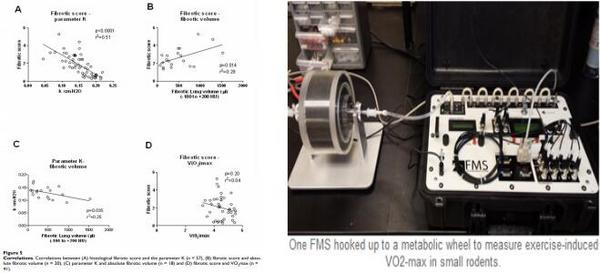
本文通过SSI能量代谢监测技术研究特发性肺纤维化动物的耗氧量VO2max,将啮齿动物置于在封闭的跑步机上以越来越快的速度跑连续测量氧气和二氧化碳。VO2平均减少了10%,但没有达到统计显著性。
需要说明的是,北京易科泰生态技术有限公司作为美国SSI公司在中国的独一家技术支持中心,积10多年的动物能量代谢监测技术经验可以为各种动物(媒介昆虫、哺乳动物、鸟类、海洋动物、经济动物、人体等)能量代谢监测提供创新型专家型技术方案,详细技术方案咨询请致电010-82611269。
参考文献及资料(仅列出部分代表性文献)
1. Ask K, Labiris R, Farkas L, et al. Comparison between conventional and" clinical" assessment of experimental lung fibrosis[J]. Journal of translational medicine, 2008, 6(1): 16.
2. Becker N I, Encarnação J A, Kalko E K V, et al. The effects of reproductive state on digestive efficiency in three sympatric bat species of the same guild[J]. Comparative Biochemistry and Physiology Part A: Molecular & Integrative Physiology, 2012, 162(4): 386-390.
3. Cabrera-Martínez L V, Cruz-Neto A P. The energetic cost of mounting an immune response for Pallas’s long-tongued bat (Glossophaga soricina)[J]. PeerJ, 2018, 6: e4627.
4. Carey C. Is disruption to passive gas-exchange a mechanism of dehydration for WNS-infected hibernating bats?[M]. Southern Illinois University at Carbondale, 2014.
5. Dechmann D K N, Wikelski M, van Noordwijk H J, et al. Metabolic costs of bat echolocation in a non-foraging context support a role in communication[J]. Frontiers in physiology, 2013, 4: 66.
6. Gearhart C, Adams A M, Pinshow B, et al. Evaporative water loss in Kuhl's pipistrelles declines along an environmental gradient, from mesic to hyperarid[J]. Comparative Biochemistry and Physiology Part A: Molecular & Integrative Physiology, 2020, 240: 110587.
7. Makanya A N, Mortola J P. The structural design of the bat wing web and its possible role in gas exchange[J]. Journal of Anatomy, 2007, 211(6): 687-697.
8. Meierhofer M B, Johnson J S, Field K A, et al. Bats recovering from white-nose syndrome elevate metabolic rate during wing healing in spring[J]. Journal of wildlife diseases, 2018, 54(3): 480-490.
9. Naffa K S. WHITE-NOSE SYNDROME AND IMMUNE RESPONSES IN A RESISTANT BAT SPECIES (EPTESICUS FUSCUS)[J]. 2019.
10. Nespolo R F, Artacho P, Verdugo C, et al. Short-term thermoregulatory adjustments in a South American anseriform, the black-necked swan (Cygnus melanocoryphus)[J]. Comparative Biochemistry and Physiology Part A: Molecular & Integrative Physiology, 2008, 150(3): 366-368.
11. Suarez R K, Welch Jr K C, Hanna S K. Flight muscle enzymes and metabolic flux rates during hovering flight of the nectar bat, Glossophaga soricina: further evidence of convergence with hummingbirds[J]. Comparative Biochemistry and Physiology Part A: Molecular & Integrative Physiology, 2009, 153(2): 136-140.
12. Welman S, Tuen A A, Lovegrove B G. Using thermoregulatory profiles to assess climate change vulnerability in an arboreal tropical bat: heterothermy may be a pre-adaptive advantage[J]. Climate Research, 2017, 74(2): 161-170.
13. https://zhidao.baidu.com/daily/view?id=192918
14. https://new.qq.com/rain/a/20200201A03I5S00
15. http://news.sciencenet.cn/htmlpaper/2015213862993835711.shtm?id=35711






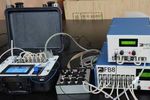

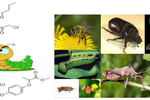

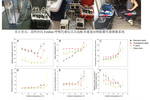
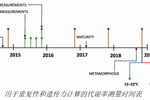






![聚酰胺粉 [柱层析用,高分离性能] 60-100目/80-120目/100-200目](https://p-06.caigou.com.cn/135x120/2024/7/2024071513085253637.jpg)







